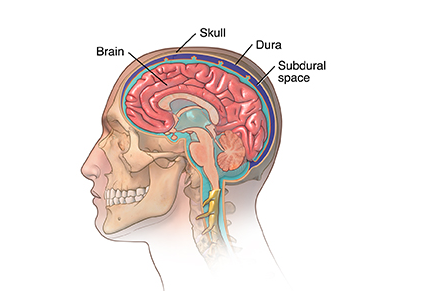The phrase “burr hole surgery” may not be familiar to you, but it can be a vital, life-saving procedure for people who are suffering from dangerous brain pressure. The main purpose of this minimally invasive neurosurgical technique is to remove extra blood or fluid from the brain, which is frequently brought on by illnesses like hydrocephalus, brain hemorrhages, or chronic subdural hematomas.
The reality is much less frightening than the terrifying prospect of having a hole drilled in the skull. Modern surgical techniques have improved the procedure’s safety, speed, and effectiveness in treating neurological disorders that can be fatal. After having burr hole surgery, patients frequently experience immediate relief from symptoms like weakness, confusion, and excruciating headaches.
Quick Facts About Burr Hole Surgery
| Feature | Details |
|---|---|
| Primary Purpose | Drains excess blood or fluid from the brain to relieve pressure |
| Common Conditions Treated | Subdural hematomas, brain hemorrhages, hydrocephalus |
| Procedure Type | Minimally invasive neurosurgery |
| Anesthesia Used | General or local anesthesia, depending on the case |
| Average Surgery Duration | 1 to 2 hours |
| Hospital Stay | Typically 2 to 5 days, depending on recovery |
| Potential Risks | Bleeding, infection, seizures, recurrence of fluid buildup |
| Success Rate | High, with many patients experiencing immediate symptom relief |
| Post-Surgery Care | Regular monitoring, wound care, follow-up imaging scans |
Why Is Surgery Required for Burr Holes?
Because of the fluid and protective layers that envelop our brains, even minor head injuries are prevented from causing serious harm. But occasionally, excessive pressure on the brain due to trauma, blood vessel ruptures, or fluid buildup can result in potentially fatal complications.
One of the quickest and most efficient methods to release pressure and stop irreversible damage in these situations is burr hole surgery.
Some of the most common conditions that require burr hole surgery include:
✔ Chronic Subdural Hematomas – A slow accumulation of blood between the brain and skull, often occurring in older adults after minor head injuries.
✔ Brain Hemorrhages – Uncontrolled bleeding that can lead to dangerous swelling and pressure.
✔ Hydrocephalus – A buildup of cerebrospinal fluid that disrupts normal brain function.
💡 The procedure is designed to be as minimally invasive as possible, ensuring faster recovery times and a reduced risk of complications.
What to Expect Before, During, and After the Procedure
Preparation for Surgery
In some cases, burr hole surgery is an emergency procedure requiring immediate action. However, when it is planned, your doctor will guide you through pre-operative instructions, which may include:
✔ Stopping blood-thinning medications (such as aspirin or warfarin) to reduce the risk of excessive bleeding.
✔ Undergoing imaging tests (CT scans or MRIs) to assess the exact location of the fluid buildup.
✔ Avoiding food and drinks after midnight before the surgery.
If you smoke, quitting before surgery is strongly recommended, as smoking can interfere with the healing process.
How the Procedure is Performed
🔹 Step 1: Anesthesia & Preparation
The patient is either given local anesthesia (awake but pain-free) or general anesthesia (fully asleep) depending on the complexity of the case.
🔹 Step 2: Scalp Incision & Drilling
The surgeon makes a small incision in the scalp, trims any hair in the area, and then drills one or two small holes into the skull using precision tools.
🔹 Step 3: Fluid Drainage
Once the skull is opened, the surgeon carefully drains the accumulated blood or cerebrospinal fluid to reduce intracranial pressure.
🔹 Step 4: Closure & Recovery
In many cases, a small drain tube is temporarily left in place to continue removing excess fluid over the next 24 to 48 hours. The incision is then closed, and the patient is monitored closely for any complications.
Recovery and Post-Surgical Care
Patients typically spend a few days in the hospital under observation, with vital signs and neurological function carefully monitored.
✔ Pain Management: Mild pain or discomfort is common, but it can usually be managed with over-the-counter pain relievers.
✔ Activity Restrictions: Patients should avoid strenuous activities, including heavy lifting and contact sports, for several weeks.
✔ Wound Care: Keeping the incision site clean is essential to prevent infection.
✔ Follow-Up Appointments: Regular check-ups and follow-up imaging scans are required to ensure the condition is fully resolved.
🚨 Warning Signs After Surgery: Seek medical attention immediately if you experience:
🔴 Seizures
🔴 Worsening headaches
🔴 Confusion or memory problems
🔴 Weakness in the limbs
🔴 Fever or signs of infection
How Safe is Burr Hole Surgery?
Like all medical procedures, burr hole surgery carries some risks, including bleeding, infection, seizures, and possible recurrence of fluid buildup. However, it remains one of the safest and most effective neurosurgical treatments for reducing dangerous brain pressure.
With advances in medical imaging and minimally invasive techniques, surgeons can now perform this procedure with remarkable precision and success rates above 90%.
🔹 Who is Most at Risk?
✔ Elderly individuals (higher risk of subdural hematomas).
✔ People on blood thinners or with clotting disorders.
✔ Patients with a history of brain injuries or hydrocephalus.
💡 The key to a successful recovery is early intervention and adherence to post-surgical care guidelines.
A Procedure That Saves Lives
While the thought of brain surgery can be intimidating, burr hole surgery is a minimally invasive, highly effective procedure that has saved countless lives. It provides immediate relief from pressure-related symptoms, allowing patients to recover with minimal long-term effects.
💡 If you or a loved one ever require burr hole surgery, understanding the procedure and its benefits can make the experience less daunting. Advances in modern neurosurgery continue to improve patient outcomes, making this a lifesaving treatment with an excellent success rate.
📍 For more information, consult a trusted neurosurgeon or visit Mayo Clinic for expert guidance.
🚑 Your brain health matters—stay informed, act fast, and trust the advancements in modern medicine.


